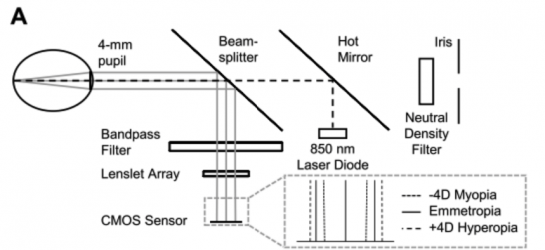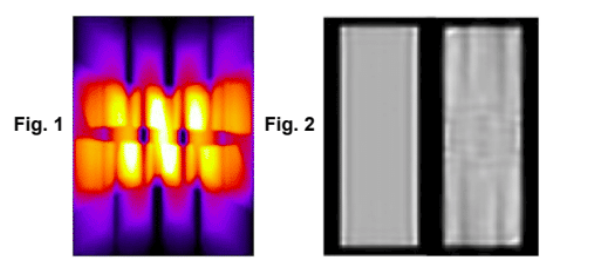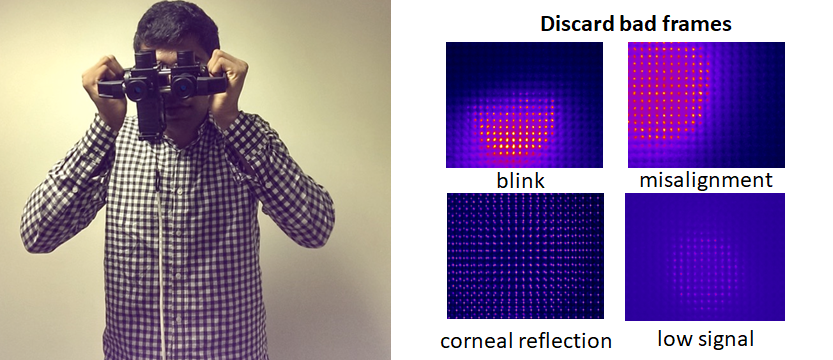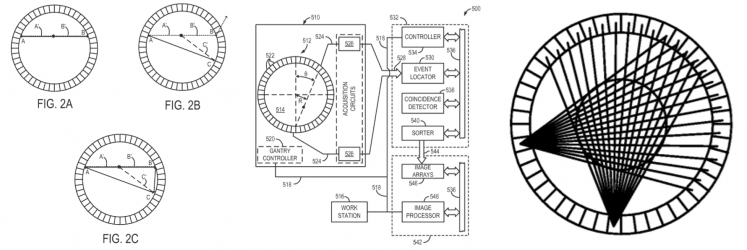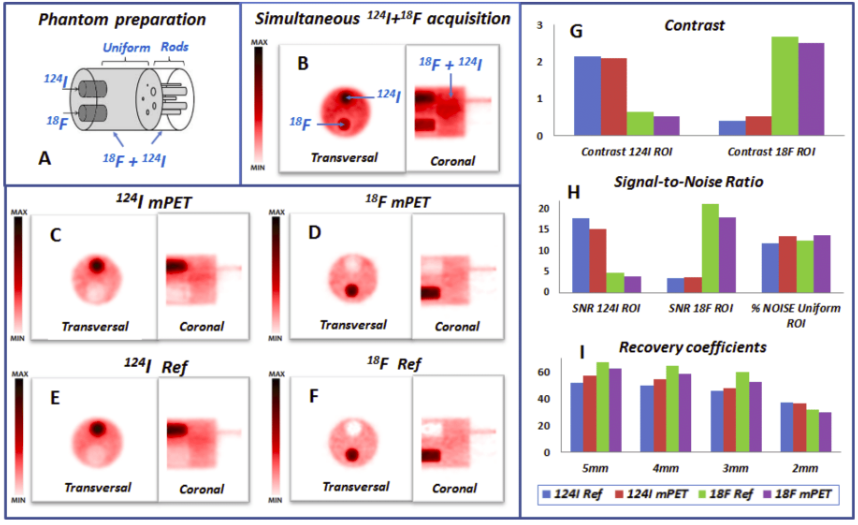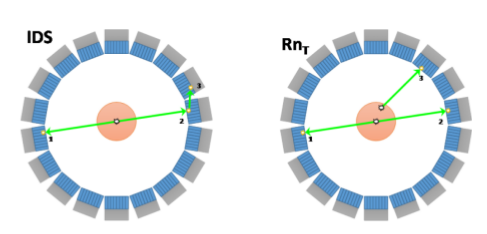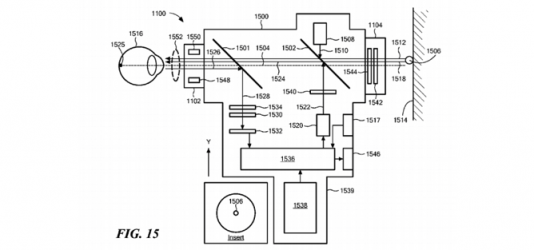| AUTHORS | |
| JOURNAL | Optometry and Vision Science, Vol 92, No 12, 2015 |
| ABSTRACT | Purpose. To introduce a novel autorefractor design that is intended to be manufacturable at low cost and evaluate its performance in measuring refractive errors. Methods. We developed a handheld, open-view autorefractor (the ͚͚QuickSee͛͛ [QS]) that uses a simplified approach to wavefront sensing that forgoes moving parts and expensive components |
Year: 2015
| AUTHORS |
S. C. Moore
M. Cervo
S. D. Metzler
E. Lage
J. M. Udias
J. L. Herraiz
|
| JOURNAL | IEEE Nuclear Science Symposium & Medical Imaging Conference, 2015 |
| ABSTRACT | When multiple pinholes are used to acquire SPECT projection data, there may be regions on the detectors where data from two or more pinholes overlap. Such “multiplexing” of projection data can cause artifacts and/or increased noise in reconstructed SPECT images, depending on the exact acquisition geometry. We previously described a modified MLEM algorithm that alternates between (i) estimating the separated projection data that would be obtained through each individual pinhole (i.e., demultiplexed data), based on the current MLEM iteration’s image, and (ii) reconstructing the SPECT image by MLEM, but assuming that the demultiplexed data estimates are the actual measured data. The modified MLEM algorithm was first tested with data simulated for a stationary 39pinhole collimator tube, and more recently with Tc99m phantom data acquired from three vials of different sizes on a 6pinhole, tripledetector SPECT camera. |
| Funding Agency |
National Institute of Health, United States, NEI
|
| Principal Investigator/s | Shivang R. Dave |
| Information | Type of Grant: Competitive funding , United states
Grant code: 1R43EY025452-01A1 Awardee Organization: Plenoptika Inc Project Start Date: 30-SEP-2015 Project End Date: 29-SEP-2017 Total Funding: $149,265 MEDIC Personnel included in the grant / Role: Dr. Eduardo Lage / Consultant |
| AUTHORS |
Eduardo Lage
Elena Garcia
Shivang Dave
Maria C. Ramirez
Lara M Garcia
Nicolás Alejandre Alba
Daryl Lim
Carlos Dorronsoro
Susana Marcos
Nicholas Durr
|
| JOURNAL | Investigative Ophthalmology & Visual Science, Vol.56,Issue 7, June 2015. ARVO Annual Meeting |
| ABSTRACT | Purpose: To compare the visual acuity (VA) resulting from eyeglasses prescribed by a novel autorefractor and by subjective refraction. |
| AUTHORS |
Eduardo M. Lage
Joaquin L. Herraiz
Vicente J. Parot
Shivang R. Dave
|
|
| APPLICATION NUMBER |
|
|
| PUBLICATION DATE | January 15th, 2015 | |
| ABSTRACT | A method and system for acquiring a series of medical images includes a plurality of detectors configured to be arranged to acquire gamma rays emitted from a subject as a result of an advanced radionuclide administered to the subject and communicate signals corresponding to acquired gamma rays. A data processing system is configured to receive the signals from the plurality of detectors, determine double coincidence event dataset and a multiple coincidence event dataset, separate the multiple coincidence event dataset into at least one of a standard lines of response dataset and a nonstandard lines of response dataset, and apply a background correction to the double coincidence event dataset based on the non-standard lines of response dataset and/or the standard lines of response dataset to obtain a standard coincidence dataset. | |
| LINK | https://patentscope.wipo.int |
| AUTHORS |
Nicholas J. Durr
Eduardo Lage
Shivang Dave
|
| APPLICATION NUMBER | PCT/US2014/045305 |
| PUBLICATION DATE | 8 January 2015 |
| ABSTRACT | Eye prescriptions may be determined by providing a simple, easy to use, portable device with a specially configured targeting light source that aligns the eye, mitigates accommodation, and provides accurate results. Unlike stationary, closed view autorefractors, this device typically is portable, self-usable, relatively inexpensive, enabling more widespread use across the world. |
| LINK | https://worldwide.espacenet.com |
| AUTHORS |
J. L. Herraiz
S. C. Moore
M.A. Park
J. M. Udias
J. J. Vaquero
E. Lage
|
| JOURNAL | IEEE Nuclear Science Symposium & Medical Imaging Conference, 2015 |
| ABSTRACT | Positron emission tomography (PET) is one of the most sensitive noninvasive molecular imaging tool, being its sensitivity several orders of magnitude higher than that typically obtained in single photon emission computed tomography (SPECT). However, PET lacks the ability of SPECT to multiplex signals from several tracers, which is very useful in many different studies such as cardiac imaging with 99mTcSestamibi and 201Tl. Recently, it has been shown that the use of tracers labelled with positrongamma emitter radionuclides like (124I, 86Y, 82Rb, 94mTc, 76Br) in combination with tracers labelled with standard positronemitter radionuclides like (18F, 11C, 13N) enables multiplexed PET (mPET). mPET uses the triple coincidences from the positrongamma emitters, together with the standard double coincidences to reconstruct separated images of each radionuclide’s activity distribution. We obtained encouraging results with mPET in some initial preclinical studies, but a detailed study of the quality and quantification properties of mPET images, and an evaluation of its performance in realistic clinical scenarios was still required. |
| Funding Agency |
National Institute of Health, United States, NEI
|
| Principal Investigator/s | Shivang R. Dave |
| Information | Type of Grant: Competitive funding , United states
Grant code: 1R43EY025452-01A1S1 Awardee Organization: Plenoptika Inc Project Start Date: 30-SEP-2015 Project End Date: 29-SEP-2018 Total Funding: $25,000 MEDIC Personnel included in the grant / Role: Dr. Eduardo Lage / Consultant |
| Funding Agency |
National Institute of Health (USA) |
| Principal Investigator/s |
Dr. José Venegas |
| Information | Type of Grant: Competitive funding , United states
Grant code: 1R21EB020849-01 Awardee Organization: MASSACHUSETTS GENERAL HOSPITAL (MGH) Project Start Date: 15-JUL-2015 Project End Date: 30-APR-2017 Total Funding: $264,369 MEDIC Personnel included in the grant / Role: Dr. Eduardo Lage / Investigator |
| AUTHORS |
Eduardo Lage
Vicente Parot
Stephen C. Moore
Arkadiusz Sitek
Jose M. Udías
Shivang R. Dave
Mi-Ae Park
Juan J. Vaquero
Joaquin L. Herraiz
|
| JOURNAL | Medical Physics, Vol 42, No 3, March 2015 |
| ABSTRACT | Purpose: Triple coincidences in positron emission tomography (PET) are events in which three γ-rays are detected simultaneously. These events, though potentially useful for enhancing the sensi- tivity of PET scanners, are discarded or processed without special consideration in current systems, because there is not a clear criterion for assigning them to a unique line-of-response (LOR). Methods proposed for recovering such events usually rely on the use of highly specialized detection systems, hampering general adoption, and/or are based on Compton-scatter kinematics and, consequently, are limited in accuracy by the energy resolution of standard PET detectors. In this work, the authors propose a simple and general solution for recovering triple coincidences, which does not require specialized detectors or additional energy resolution requirements. |
| AUTHORS |
Nicholas J. Durr
Eduardo Lage
Shivang Dave
DAryl Lim
Susana Marcos
Carlos Dorronsoro
|
| APPLICATION NUMBER | PCT/US2014/045261 |
| PUBLICATION DATE | 8 January 2015 |
| ABSTRACT | Purpose. To introduce a novel autorefractor design that is intended to be manufacturable at low cost and evaluate its performance in measuring refractive errors. Methods. We developed a handheld, open-view autorefractor (the ͚͚QuickSee͛͛ [QS]) that uses a simplified approach to wavefront sensing that forgoes moving parts and expensive components |



